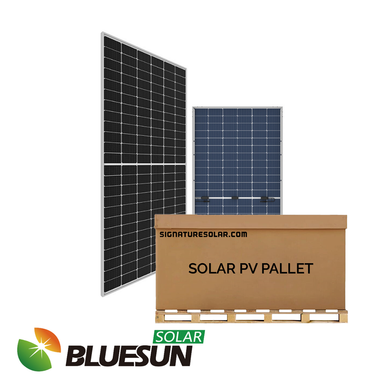Hello everyone,
My question is the following: I there a benefit in Using Bi-Facial solar panels in a hot sunny climate? I am located in northern mexico / south texas. I was all set with getting 36 of these from Signatur Solar

 signaturesolar.com
signaturesolar.com
Then I watched one of Will's videos and he mentioned that Bi-Facial panels don't work well if they get too hot. Would I be better off with these https://signaturesolar.com/solarever-455w-split-cell-mono-perc-solar-panel-silver-full-pallet-31/ ?
I was planning on using 3 EG4 inverters. Four, 7-panel strings for 2 EG4's for the house and two 4 panel strings and 1 EG4 for a smaller system to run stuff in a barn. That is a total of 36 panels. I will have 6 server rack batteries. 5 batteries for the house and 1 for the barn.
Any thoughts or comments will be appreciated,
Oscar
My question is the following: I there a benefit in Using Bi-Facial solar panels in a hot sunny climate? I am located in northern mexico / south texas. I was all set with getting 36 of these from Signatur Solar

Preorder - 16.56kW Pallet - BlueSun 460W Bifacial Solar Panel (Silver) | Up to 575W with Bifacial Gain | Full Pallet ( 36 ) - 16.56kW Total
solar panels, pv, solar, bluesun, 460w, 460, 400w, mono, monocrystalline, 20% efficiency, solar-residential
 signaturesolar.com
signaturesolar.com
Then I watched one of Will's videos and he mentioned that Bi-Facial panels don't work well if they get too hot. Would I be better off with these https://signaturesolar.com/solarever-455w-split-cell-mono-perc-solar-panel-silver-full-pallet-31/ ?
I was planning on using 3 EG4 inverters. Four, 7-panel strings for 2 EG4's for the house and two 4 panel strings and 1 EG4 for a smaller system to run stuff in a barn. That is a total of 36 panels. I will have 6 server rack batteries. 5 batteries for the house and 1 for the barn.
Any thoughts or comments will be appreciated,
Oscar



